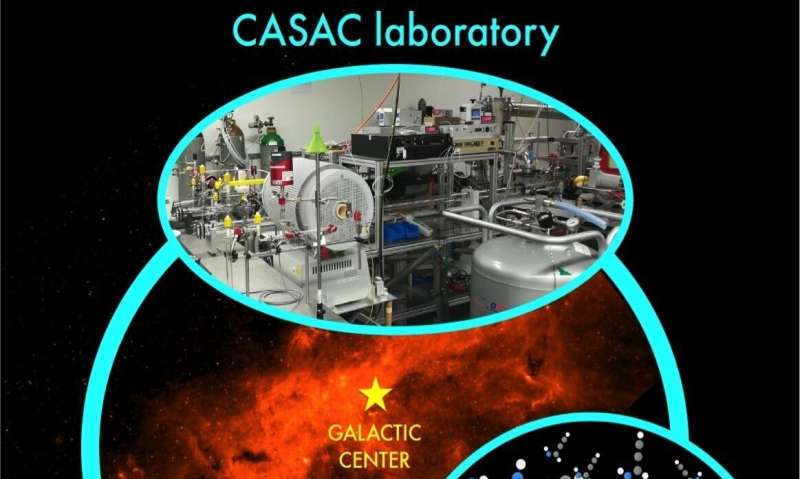From lab to space: Discovery of a new organic molecule in an interstellar molecular cloud

Laboratory experiments performed at the Center for Astrochemical Studies (CAS) of the Max Planck Institute for Extraterrestrial Physics (MPE) in Munich, together with astronomical observations conducted by the Italian National Institute of Astrophysics (INAF), lead to the identification of a new molecule in the molecular cloud known as G+0.693-0.027, close to the galactic center. The newly discovered molecule is called propargylimine: according to the experts, this chemical species may play a fundamental role in the formation of amino acids, among the key ingredients for life as we know it.
The propargylimine has the chemical formula HCCCHNH and is an unstable compound. It is very difficult to isolate it in the ordinary conditions of the Earth's atmosphere, but it thrives at low densities and temperatures typical of the interstellar medium. Luca Bizzocchi, the study's lead author who studied the molecule spectroscopy at MPE, explained: "The peculiarity of this chemical species lays in its carbon–nitrogen double bond, which gives it a high reactivity. With this double bond, it becomes a fundamental constituent of the chemical chains that lead from the simplest and most abundant molecules in space containing carbon and nitrogen—for example formaldehyde (H2CO) and ammonia (NH3), respectively—to the more complex amino acids, the fundamental building blocks of terrestrial biology."
Every molecule absorbs and emits radiation at certain wavelengths, creating a pattern that uniquely describes it, like human fingerprints. With the aim of unveiling the presence of propargylimine in space, spectroscopic analysis has been performed at the Max Planck laboratories to rebuild the molecule's "identikit."
"As a molecule rotates in the interstellar medium it emits photons at very precise frequencies. This information, when combined with data from radio telescopes, allows us to know whether a molecule is present in the molecular clouds, the sites of star and planet formation," continues Bizzocchi.
In this case, the laboratory data have been compared with the results of observations taken at the 30m radio telescope in Sierra Nevada, Spain. "Our molecule was already there," said Víctor M. Rivilla M, a Marie Skłodowska-Curie research fellow at INAF Florence, who led the INAF observational effort that resulted in the confirmation of propargylimine in the G+0.693-0.027 environment. "It was laying in our data of the G+0.693-0.027 molecular cloud, but we couldn't identify it without knowing its precise spectroscopy, that is the full description of its emission frequency pattern. As soon as we got it, thanks to the measurements in the laboratory, we realized that the propargylimine was undoubtedly there, waiting for someone to recognize it."
As a matter of fact, molecules with such a carbon–nitrogen double bond take part in the so called Strecker synthesis, a chemical process widely used to synthesize amino acids in laboratory. Under favorable conditions, similar reactions are thought to occur also in a number of extraterrestrial environments such as the frozen mantles of interstellar dust or asteroid surfaces, as demonstrated by the recent discovery of glycine, the simplest amino acid, in the tail of comet 67P Churyumov-Gerasimenko.
"High precision molecular spectroscopy is one of our group's goals," concluded Paola Caselli, the director of the Center for Astrochemical Studies at MPE and co-author of the paper. "Only with high precision measurements of the frequencies of interstellar molecules we can use such molecules as powerful diagnostic tools of the physical and chemical evolution of interstellar clouds, where stellar systems like our own form."
More information: Propargylimine in the laboratory and in space: millimetre-wave spectroscopy and first detection in the ISM, arXiv:2006.08401 [astro-ph.GA] arxiv.org/abs/2006.08401
Provided by Max Planck Society





















